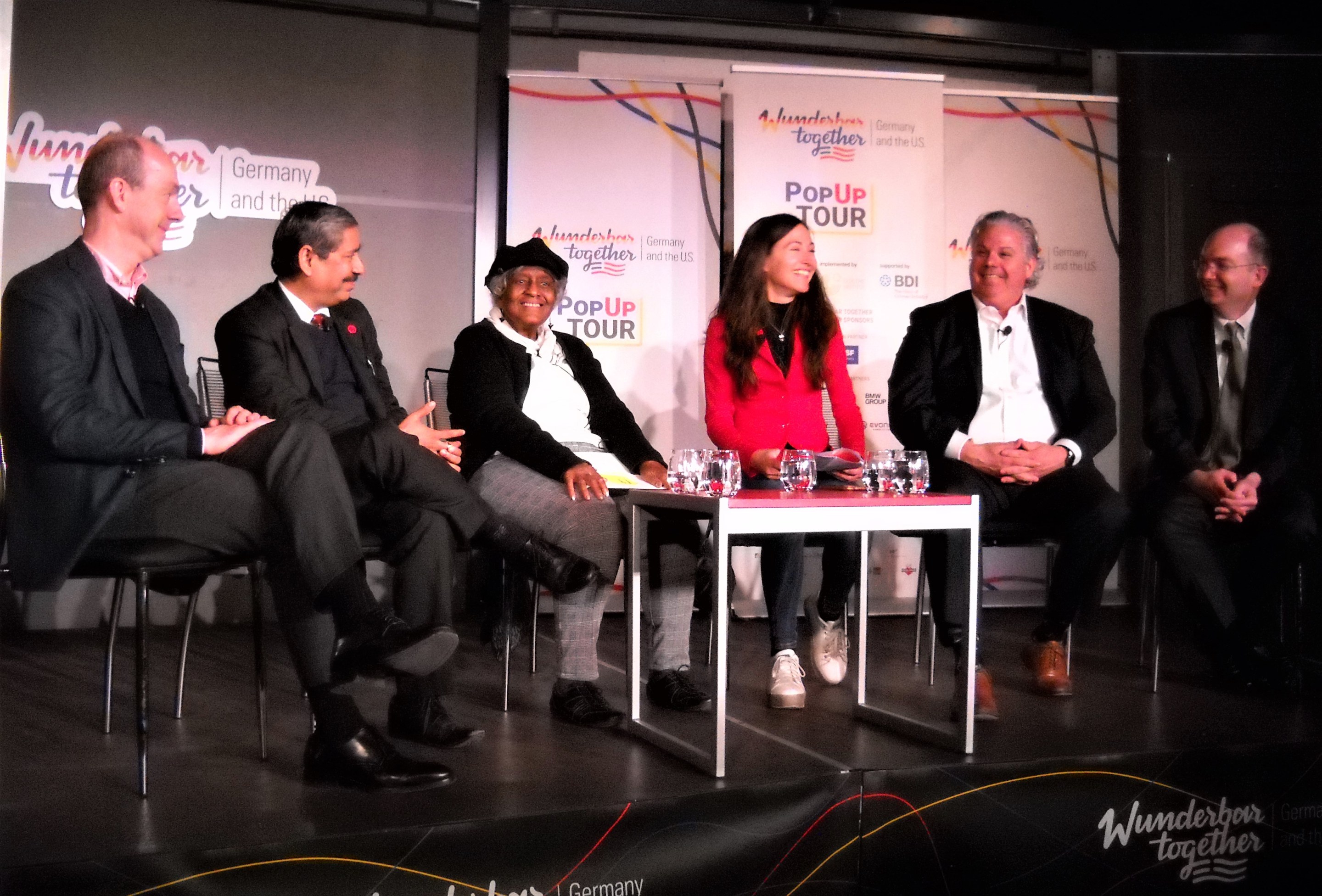How will Chicago's transportation network have to change in the coming decades to meet the needs of future generations? At the panel discussion “Our City 2049,” local heavy-hitters in the field tackled that intriguing question. The talk, moderated by Bettina Oberhauser, a culture and science reporter with H.R. Fernsehen, was part of Germany Week, a celebration of arts and culture at Daley Plaza. Panelists included Chris Hall, from Skidmore Owings Merrell architects; Dr. P.S. Sriraj director of UIC's Urban Transportation Center; Jacky Grimshaw, vice president of government affairs for the Center for Neighborhood Technology; Jerry Quandt, director of the Illinois Autonomous Vehicle Association; and Chris Kopp of the civil engineering firm HNTB.
The discussion focused on the two main topics of land use and traffic safety. "A lot of the problems of transportation emanate from city sprawl," Sriraj said. "Once you have the land use set up at a certain aspect, there's nothing transportation can do to fix it. People choose to live where they live. People choose to work where they work. It's the transportation guy's problem to fix the gap between the origin and the destination."
Sriraj argued that most traffic congestion issues stem from that divide, called "spatial mismatch" by urban planners. "That is a fundamental issue that no one wants to touch, because it cannot be fixed," he said, adding that you can't force people to live in locations that are conducive to a sustainable transportation system. "The land use has a significant impact on how transportation evolves. Connected to that is density of population."
Grimshaw agreed, with one small caveat. "If we look at Chicago, we do have available land for development," she said. "What's getting in the way are really equity issues. The way the city has developed in the past, it doesn't have to be the way the city goes in the future, but unless we are intentional about using the available land, making it available for people to live as well as work, as well as play, as well as to be educated, then we will have a problem that we can't fix." On the other hand, Grimshaw added, we can create a brighter future from a transportation and equity standpoint by being very intentional about how we reinvest in communities and redevelop land.
Quandt argued that one of the things making Chicago-area roadways less safe and efficient is a lack of communication between cars, trucks and trains. "None of those are interoperable," he said. "To me, the biggest challenge we have in transportation is the disparateness of it." Quandt used a biological metaphor to make his point. "The structure of the city is the skeleton of the body of our environment that we live in. Mobility and transportation is the circulatory system. All of them are exactly correct. When you have a body that's misaligned or mismanaged because of its challenges to the circulatory system, therefore certain organs or parts of that system don't necessarily function as helpfully as ones where blood flow comes to and from."
Kopp expressed a strong concern about traffic safety. "For a long time we've tolerated thousands and thousands of highway fatalities across the United States," he noted. "Through the introduction of safety features on cars, that number has been coming down for decades, but it recently turned around." He noted that distracted driving seems to be a major factor in the spike in road deaths. "The cell phone in everyone's pocket doesn't necessarily stay in your pocket while you're driving. It's now causing especially vulnerable road users like cyclists and pedestrians to be in greater danger."
Hall argued that the Chicagoland transit network, considered to be one of the best in North America is sorely outdated. "We don't have enough investment in high-speed transit," he said. "We still have an archaic system -- the vehicles were designed 50 or 60 years ago. The network was designed 100 years ago." While Hall conceded that the distances are relatively short, he noted that a regional transit trip can can take two hours.
All of this is food for thought as Chicago prepares to meet the transportation challenges of the next three decades.




